Cards In This Set
| Front | Back |
|
Hypodontia (partial andodontia)
|
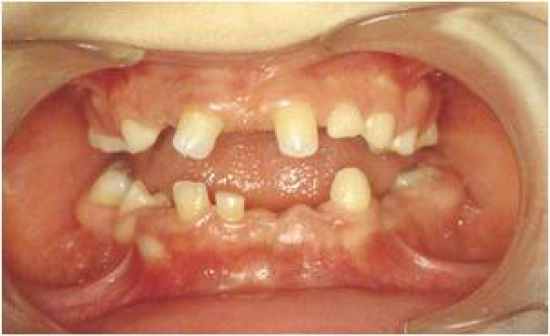 - congenital absence of one or more teeth, most commonly the third molars, maxillary laterals, or mandibular 2nd premolars |
|
Hypodontia in Anhydrotic Ectodermal Dysplasia
|
- this is hypodontia associated with a genetic disorder where there are problems arising from ectodermal problems
- There are problems with things that develop from the ectodermal layer (glandular tissue, salivary glands, sebasceous glands, hair follicle, dental structures) - hair is space and thin, anhydrotic means that the patient does not produce sweat = temp regulation problems |
|
Hyperdontia (Supernumerary Teeth)
|
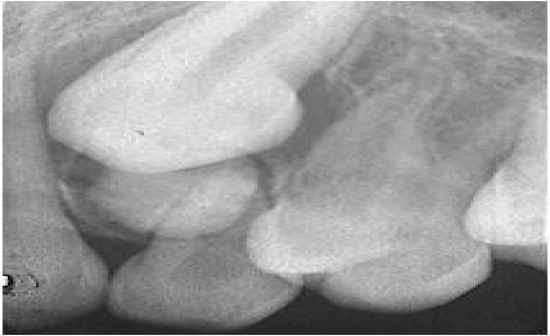 - 90% in the maxilla, can be single or multiple excess teeth - mesiodens is the most common (between the maxillary centrals) - 4th molars, lateral incisors are also common cleidocranial dysplasia will result in pseudohypodontia with hyperdontia because the teeth will be present but not erupted |
|
Microdontia
|
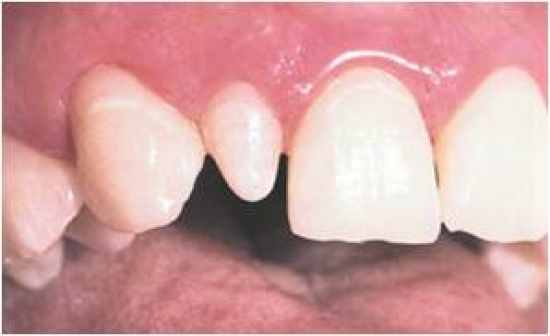 - can be true generalized, generalized relative, or microdontia involving a single tooth - can be a problem because these teeth will generate diastemas in the dentition |
|
Macrodontia
|
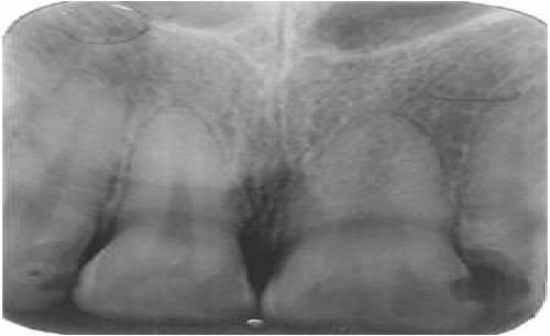 - can be true generalized, relative generalized, macrodontia involving a single tooth, or from facial hemi-hypertrophy - note that the macrodontia also occurs in the apical portion of the tooth in addition to the crown |
|
Gemination
|
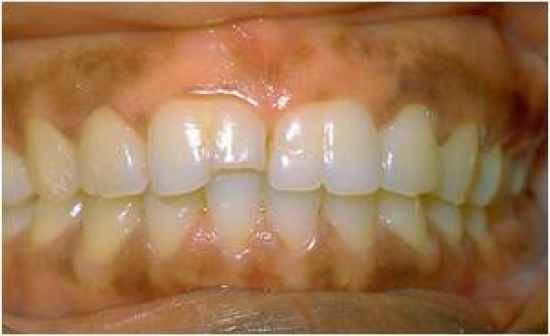 - an abnormally shaped crown tht is extra wide due to the development of two crowns from one tooth germ - opposite of fusion (single tooth that attempts to develop from two germs) |
|
Fusion
|
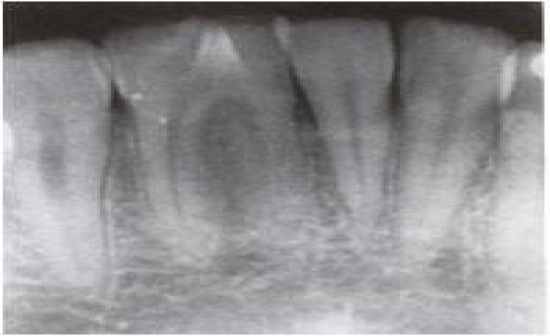 - abnormally shaped tooth that may appear as an extra wide crown, a normal crown with an excess root, etc resulting from the union of two adjacent tooth germs by dentin during development |
|
Dens in Dente (Dens Invaginatus)
|
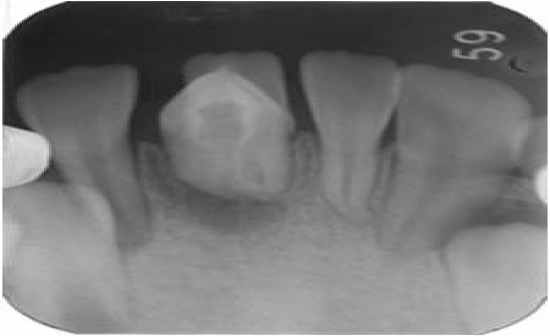 - developmental anomaly in which the focal area of the crown of a maxillary lateral is folded inward - when severe this results in a conically shaped tooth with a small surface opening that is quickly subject to caries, pulpitis, and PA inflammation - looks like a radiodensity within another tooth |
|
Dens Evaginatus
|
 - A developmental anomaly in which a focal area of the crown projects outwards and produces what appears to be an extra cusp or abnormal shape to the existing cuspal arrangement (talon cusp) - instead of the lamina going inwards, it goes out |
|
Dilaceration
|
 - a sharp bend or angulation in the root portion (occasionally the crown, but normally the root) - can be from trauma, continued formation during a curve of eruption, idiopathic - complicates extractions |
|
Taurodontism
|
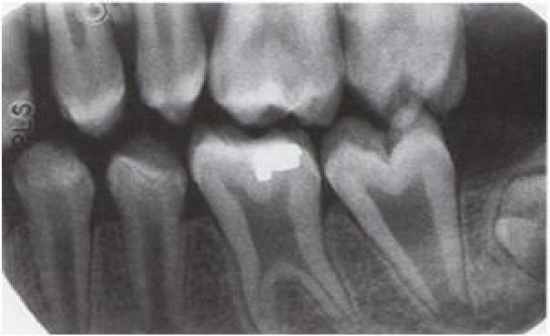 - a molar with an elongated crown and apically placed furcation of the roots, resulting in an enlarged rectangular coronal pulp chamber - developmental associated with amelogenesis imperfecta, Down's Syndrome, common in the Neandrethal man - no treatment needed, results in a complicated RCT |
|
Concrescence
|
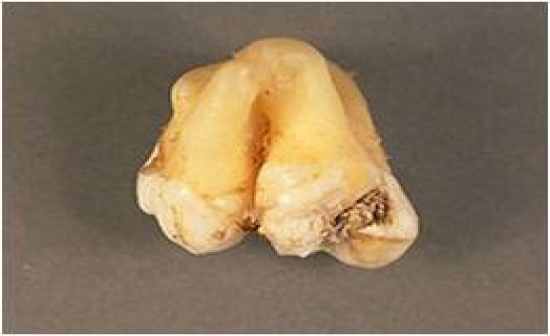 - two or more roots unite by cementum, but this occurs after root formation (unlike fusion) - caused by trauma, crowding and is more common in the maxillary molars |
|
Cervical Enamel Projection (Enamel Pearl)
|
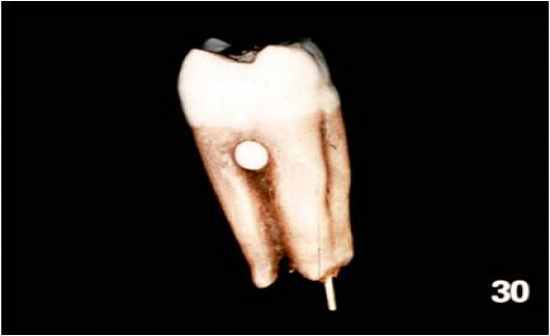 - located at the CEJ 1-3mm long and 1mm wide - contributes to periodontal pocketing due to its rounded spherical nature contributing to plaque accumulation |
|
Hypercementosis
|
 - Excessive deposit of cementum on the root surface - caused by increased or decreased forces, Paget's disease, hyperpituitarism, chronic infection - no treatment needed, need to identify for clinical purposes |
|
Supernumerary Roots
|
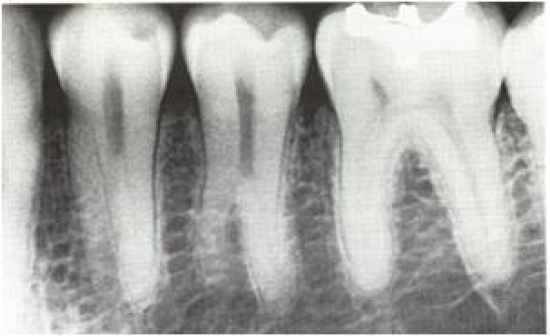 - extra roots, more than the expected number - more common in the mandibular bicuspids |



